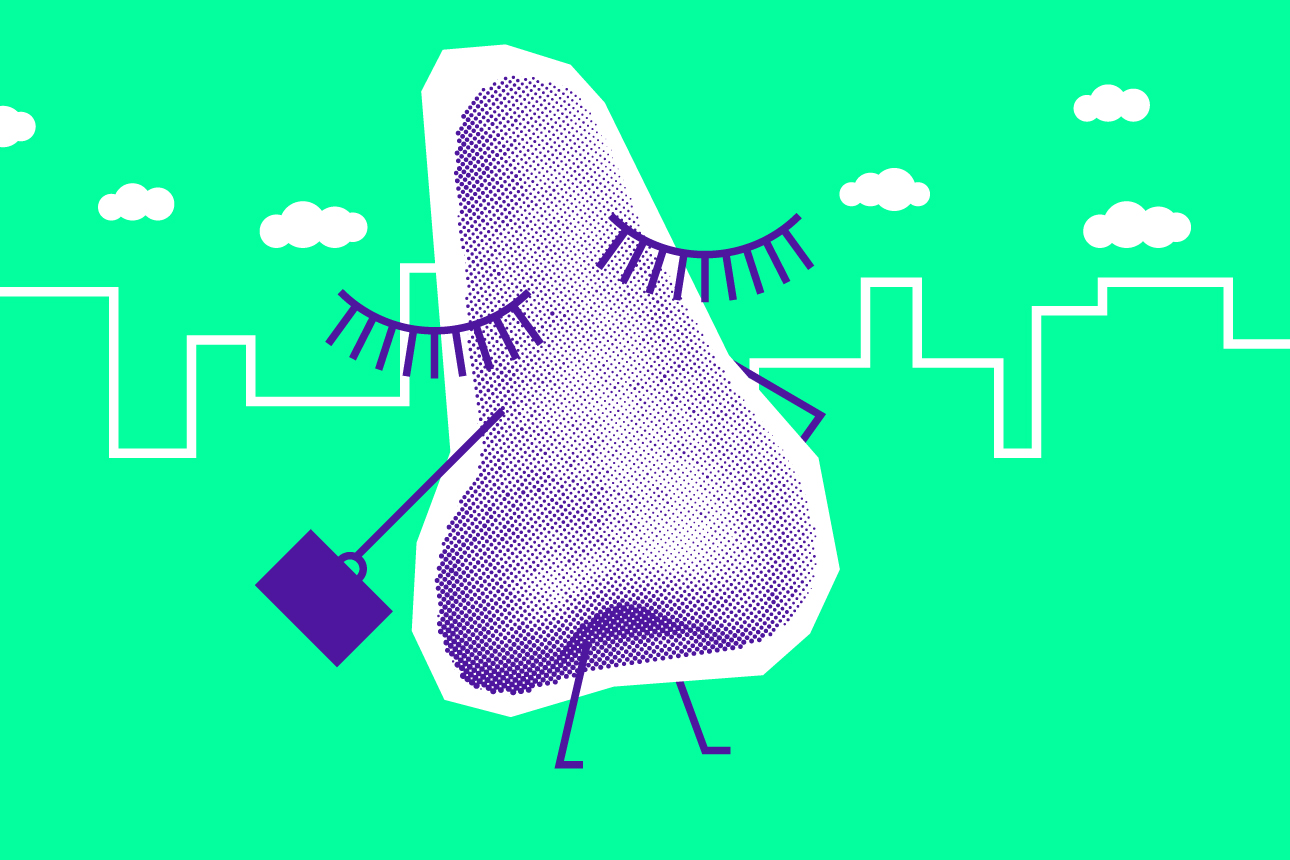Business Scents: The Rise of Digital Olfaction
Two emerging branches of digital olfaction technology have the potential to revolutionize a range of industries.

The aroma of freshly baked bread wafting through supermarket aisles. The percolating pot of coffee in a house for sale. The leathery richness of a new car’s interior. We may not always realize it, but our sense of smell is central to many decisions we make as consumers, be it purchasing a new car or deciding to grab a doughnut and coffee on the run. According to the Scent Marketing Institute, leather and cedar aromas will induce you to buy furniture, and floral and citrus notes will make you linger longer in the bookshop. One study showed that adding ambient scents to a Nike showroom increased consumers’ pleasure and stimulation, willingness to spend more money, and likelihood of returning to the store, compared with a nonscented environment.
Put simply, smell sells — a fact that has long been understood by retailers, manufacturers, and advertisers. But despite the economic and commercial importance of olfaction, businesses have generally lacked robust tools to detect, measure, and manage smells in a scientific way. This is now changing with the emergence of two branches of digital olfaction technology: one focused on the digital detection and analysis of different odors, and the other on the digital transmission and re-creation of smells. These technologies could potentially revolutionize a range of industries, from fragrances and food to the environmental and health care sectors.
A variety of innovative startups are pioneering new approaches to digital olfaction. The technology draws on a raft of scientific disciplines, including organic chemistry, silicon engineering, machine learning, data science, photonics, and software engineering. Aryballe, a digital olfaction startup based in France, uses tiny proteins called peptides grafted onto silicon wafers that react to the gas molecules associated with different odors. The various digital signatures are then decoded using machine learning and expressed in the terms that humans use to describe smells: woody, floral, fragrant, smoky, and so on. Aromyx, a digital olfaction company based in California, uses the same receptors that are found in the human nose and tongue to identify different odors. CEO Josh Silverman told us: “Rather than trying to mimic the human sense of smell — a very hard problem — we clone the actual genes from humans. We then develop these in the lab and test how different genes respond to different stimuli, such as coffee and juice.�





Comments (2)
Ann Hendricks
Chirayath Sreemohan